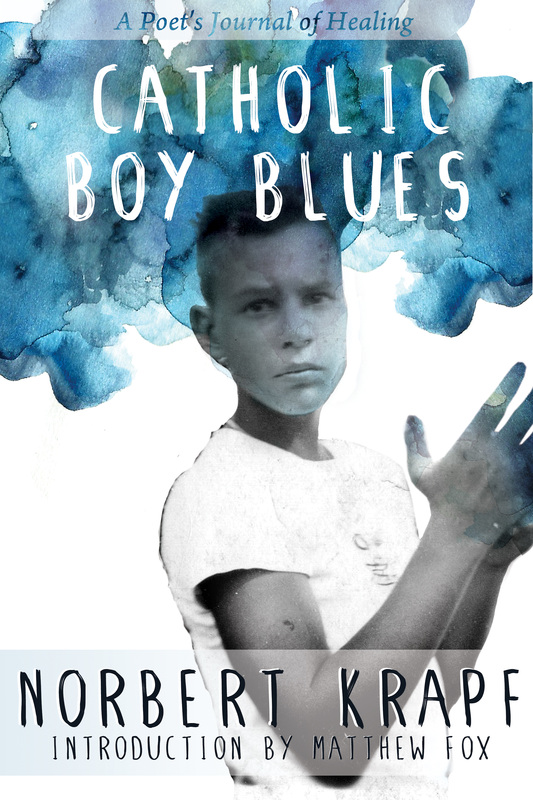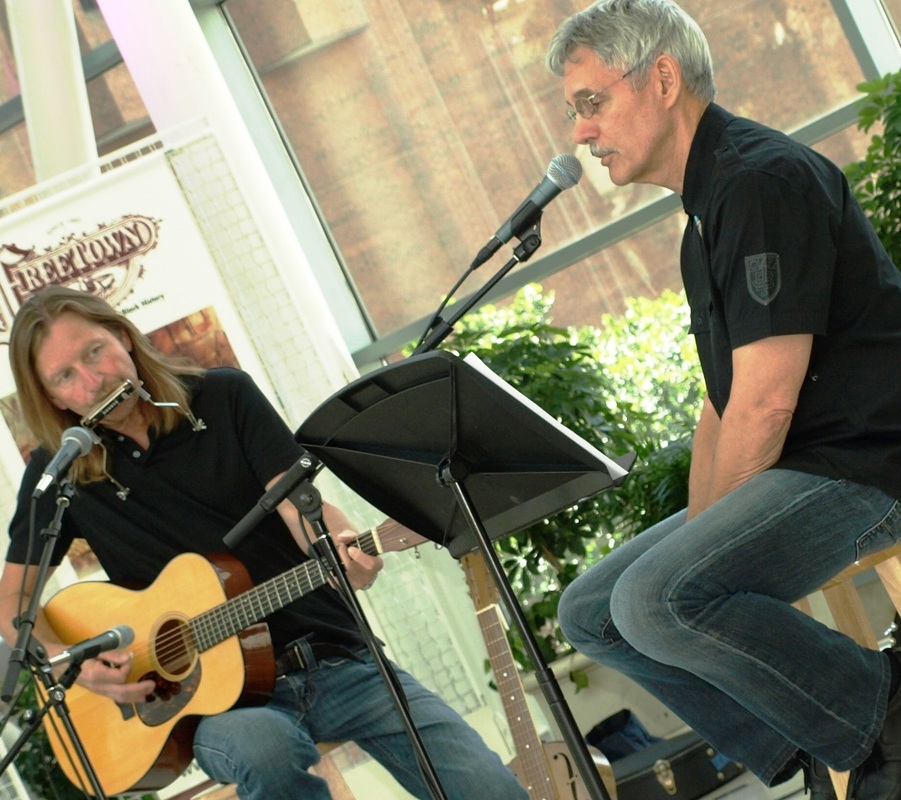|
These are poems about a priest abusing a boy, a number of boys.
Norbert Krapf, recently the poet laureate of Indiana, held it inside for half a century, before a spiritual advisor suggested he deal with it. He then did what an artist does. He created something else, something different. Think of it as a stage. (This is my conceit, not the author’s.) On the stage is a boy, still reeling from what happened so long ago, and an older man, who has been living a productive life, despite what happened. With his back to the audience, mute and distant for a long and heavy time, is the priest himself. And then there is Mr. Blues. "Okay, you got some mean and nasty stuff in your past. "I admit you got some mean and nasty stuff in your past. "My mama used to say, 'Son, let go of that bitter sass.!'" -- Mr. Blues Sings Yes Mr. Blues is the friend we all want to ride shotgun on the journey of our lives. He is the third part of the Freudian trinity, who sees clearly, speaks the truth, does not let things rest. (Krapf told me he did not create Mr. Blues but rather Mr. Blues just began speaking one day.) Mr. Blues prods the boy and the man to reconcile, to look again at what went down in rural southern Indiana, when the home-town priest asked altar boys to stay over at the rectory on the night before Sunday Mass, and also took them hunting, was a pillar of the community, and over the years he violated some but not others. Many people knew, but not everybody. The boy and the man are still working that out, five decades later. Why couldn’t they tell anybody? (One boy told his father, who beat him up, but not the priest.) Krapf used to teach at C.W. Post College on Long Island. I first heard about him in 2003, from three Navajo women from the Southwest who had been recruited to play volleyball, and who raved about Krapf for initiating them into poetry as part of the fine education they were receiving at Post. Krapf moved home to Indianapolis after that. We still have never met, although I wrote a column about him and the frontier between Bears fans and Colts fans in northern Indiana, before Super Bowl XLI in 2007. Krapf sings blues and jazz around Indiana, and loves to reminisce about the hills and farms of southern Indiana, just north of the Ohio River, a region I learned to love in my days in Louisville. Now Krapf has written poems about a different corner of his childhood. The man wonders what he could have done to heal some of the pain of the boy, and Mr. Blues hectors them to meet in the middle, to get it out. The reality is as current as Pope Francis meeting with six victims of priest abuse in early July. By now, we all know what happened, in so many places. Late in the book, there is a rustling on the hypothetical stage. It takes a long time for the priest to speak, but ultimately he does, beginning with a terse warning to the boy. Let us say he is not contrite. (Krapf notes in the preface that his therapist urged him to include the priest in these poems. Good instinct. It works in the context, and I suspect it worked for Krapf, also.) I am not qualified to critique poetry, Krapf’s use of three-line stanzas, blues cadence, repetition with slight variation, slang, familiarity, child-like observations of the living past. I only know that I read Catholic Boy Blues in two huge chunks, wondering how it would turn out. I was reminded of the aside that Nina Simone hurls at the audience in her epic song, “Mississippi Goddam:” “This is a show tune/ But the show hasn’t been written for it, yet.” Never was, to my knowledge. But the aside lives. Most of us think we have read and heard everything we need to know about priest abuse, but up to now we had not heard Norbert Krapf take it on. * * * Catholic Boy Blues. By Norbert Krapf. Introduction by Matthew Fox. 2014. Greystone Publishing LLC. Nashville, Tennessee. www.greystonepublishing.com. On July 15, it was announced that Krapf has been selected as the regional winner of the 2014 Eugene & Marilyn Glick Indiana Authors Award. He and a colleague plan to hold workshops about writing about difficult relationships. For more information: http://www.krapfpoetry.com/
Gene Palumbo
7/16/2014 07:47:57 pm
A really excellent essay, George. Thanks very much for it. I've already begun sending it to people who, in different ways, have been close to the sexual-abuse-by-priests issue -- writing about it, counseling and accompanying victims, and so on. And I'll be sending it to more of them.
George Vecsey
7/17/2014 01:40:38 am
Gene, thanks. And I bet there are more of them. 7/20/2014 10:31:42 am
Gene Palumbo, thank you for calling George's excellent essay about my book to the attention of others. There have been some fine features and articles, but no reviews in the Catholic or national press that I have seen. There seems to be resistance to the subject. 8/18/2014 05:26:27 am
Exquisitely professional thoughts. I merely hit upon this web site and desired to enunciate that I've definitely delighted in reckoning your blog articles or blog posts. Rest assured I'll subsist pledging to your RSS and I wish you write-up after much more shortly:)) 11/2/2014 01:38:39 am
hanks very much for it. I've already begun sending it to people who, in different ways, have been close to the sexual-abuse-by-priests issue Comments are closed.
|
Categories
All
|











